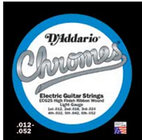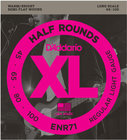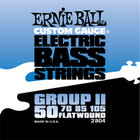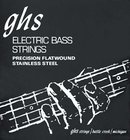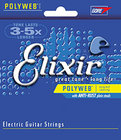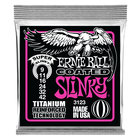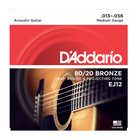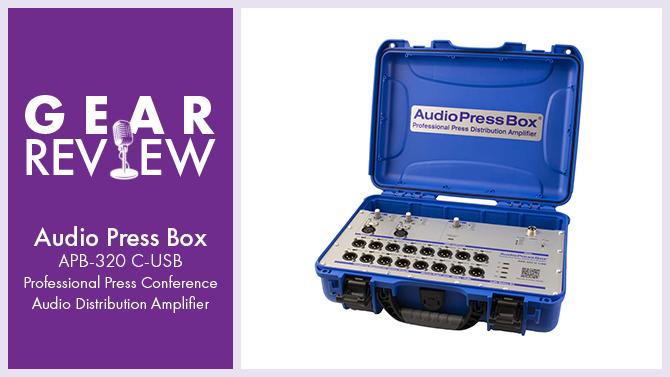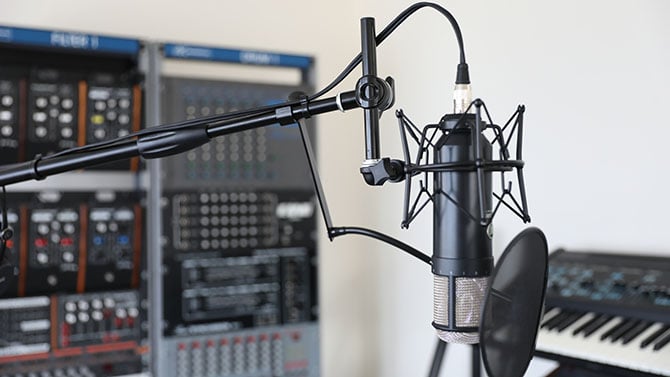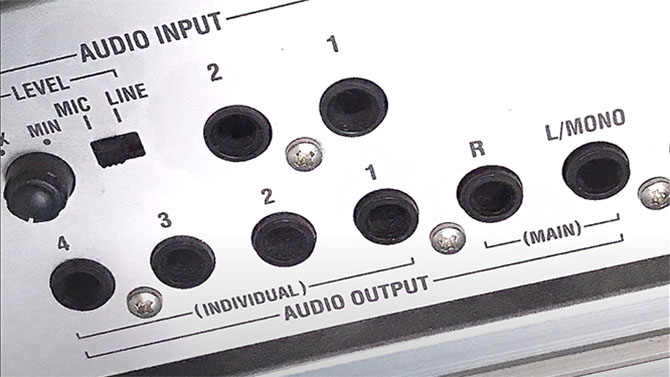Your ultimate guitar and bass tone always starts with the strings
With guitar, your fingers touch the elements that create the actual sound. You feel the pressure of the tension when you push down on a string to fret it, or pluck it to play a note. The vibrations travel through the guitar’s body, and you feel those vibrations in the neck and body as you hold the guitar. Perhaps this is why no matter how the world of musical instruments changes, guitars continue to retain their allure as responsive, sensual instruments with which many guitar players form lifelong relationships.
And this is also why it’s so important to recognize the crucial role strings play in forming the connection between you and your instrument. Choosing the right strings is about sound, tension, sustain, and whether your guitar’s feel is enticing or not. The string’s construction, and the gauge you choose, will make a big difference in how you play, as well as the tone. The only way to know what type of string suits your needs “best” is to experiment; fortunately, strings are inexpensive enough that it won’t break the bank to try multiple types. And if you’re like most guitarists and have more than one guitar, you may want to pair certain strings with certain guitars, for reasons we’ll explain later.
Electric Guitar String Tone
Unwound strings (the high E, B, and G) are made of steel and don’t differ much in tone. However, with wound strings, the type of winding, and the core over which they’re wound, can affect both tone and string life. Steel cores can be round (which gives a more vintage, fatter tone), but the more common hex core gives a brighter sound and slightly stiffer tension.
As to the windings themselves, round-wound strings, where round wire wraps around the core, are the most common string type. Pure nickel strings, like Fender’s Original Bullet strings, have a characteristically warm sound (Fig. 1). This can make a good complement to the brighter sound of single-coil pickups.
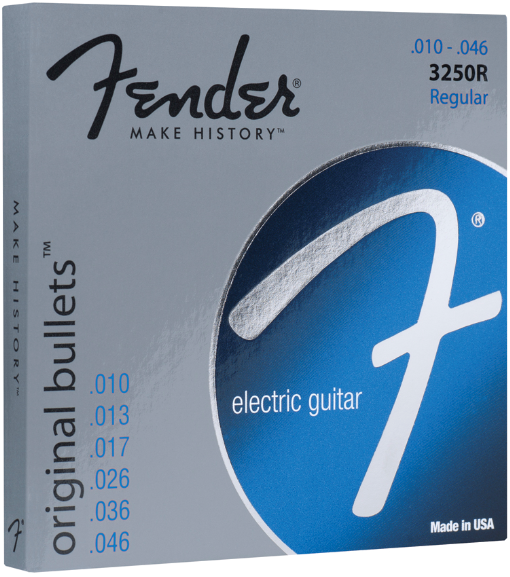
Harder metals (like chrome and steel) produce a brighter tone, although the downside is that they may be a little tougher on frets. Some of the most popular strings are D’Addario’s EXL-series strings, which wrap nickel-plated steel around a hex core.
All strings lose brightness as they age, but because nickel-wound strings start off less bright Definition:
Definition:
In audio, a sound quality that emphasizes high frequencies. Also called "crisp," "clear," or "sparkly.", the tone stays more consistent over time. Also, the coating on chrome and stainless steel wraps wears away more quickly than nickel, so maintaining their characteristic bright tone may require changing your strings more often. However, this can be mitigated because they last longer—i.e., they’re harder to break—and are more resistant to corrosion.
Flatwound strings like D’Addario’s ECG25 strings, which are often the choice of jazz guitar players and use a somewhat heavier gauge (we’ll cover gauge later), wrap the strings with a flat wrap instead of a round one. This makes for a smoother string “feel” and a warm, mellow tone. Half-round strings start off as round-wound strings, but have the tops ground off for a smoother playing surface that’s more like flatwounds, but brighter. They’re great for slide guitar, but also, sets like the D’Addario ENR71 strings for bass split the tonal difference for bass between round-wound and flatwound strings. Bass players who prefer a mellower sound often choose flatwound strings, like the Ernie Ball P02804 Group II bass strings or GHS M3050 stainless steel, long-scale bass strings.
Finally, coated strings (which are popular for acoustic guitars) have a polymer or enamel coating that resists oxidation and corrosion, so they last, and maintain their tone, longer than non-coated strings—corrosion is the enemy of both tone and string life. The tradeoff for coated strings is a higher initial cost, but if you change your strings often, coated strings could be more cost-effective in the long run. Elixir makes coated electric guitar strings in several gauges, and Ernie Ball’s P03123 strings are enamel-coated to minimize corrosion but also use titanium reinforcement winding.
Another key to maintaining tone is to minimize the presence of oils and sweat from your hands. Wipe your strings down after playing, and wash your hands before playing.
Bass strings are similar to guitar strings, but of course, are bigger and thicker. There are no unwound bass strings, and the lower strings can have two wraps (Fig. 2).
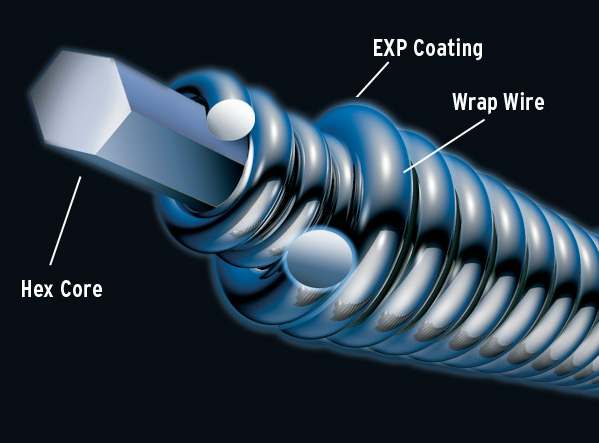
Acoustic Guitar String Tone
80/20 bronze strings (so called because they use an 80% copper, 20% zinc alloy), like the D’Addario EJ12 (Fig. 3), are the brightest option for acoustic guitar, and are generally used with guitars that have a darker inherent sound, like dreadnoughts. However, they age more rapidly than other string types.
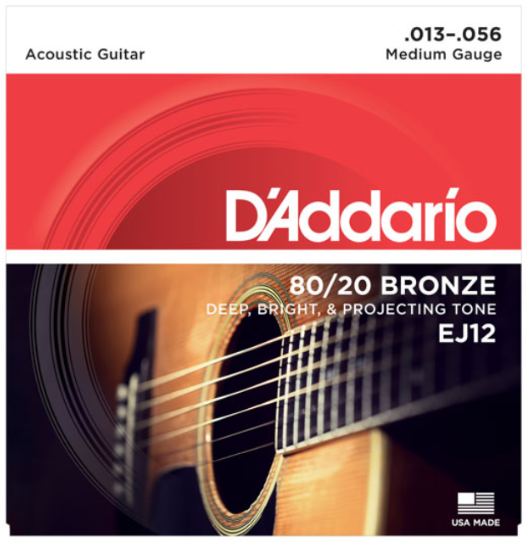
Phosphor-bronze strings (like the Fender 60XL extra-light gauge strings) are somewhat warmer—which makes them a good choice for brighter guitars to round out the tone—and because of the added phosphor, resist corrosion more effectively. They are the most popular strings for acoustic guitar. Aluminum bronze is like phosphor bronze, but with more highs and stronger bass.
As with electric guitar strings, coated versions are available. Cleartone makes coated 80/20 Bronze strings as well as coated Phospher Bronze strings for acoustic guitar. They are slightly warmer than uncoated strings, and of course, last longer.
Nylon String Guitar Tone
In this case, the tone mostly depends on the string tension. Unlike electric and acoustic guitars that are specified in terms of specific gauges (see next), nylon guitar strings can be classified according to gauge but also, according to tension—low, medium, or high (other terms are used, like light, normal, and hard but the characteristics are the same). Low tension strings, in addition to being easier to play, emphasize the note’s sustain more than the attack Definition:
Definition:
The time it takes for a signal to reach maximum amplitude. This timing controls the response of dynamics processors such as compressors and limiters, and a variety of music synthesizer modules., but with less overall volume. However, lighter tension is more prone to fret buzzing. High tension strings are the opposite—harder to play, more emphasis on the attack than the sustain, more overall volume, and less tendency toward fret buzz.
Medium tension strings, like Ernie Ball’s Ernesto Palla Nylon strings (Fig. 4), are a common choice because they’re a good compromise between low and high tension.
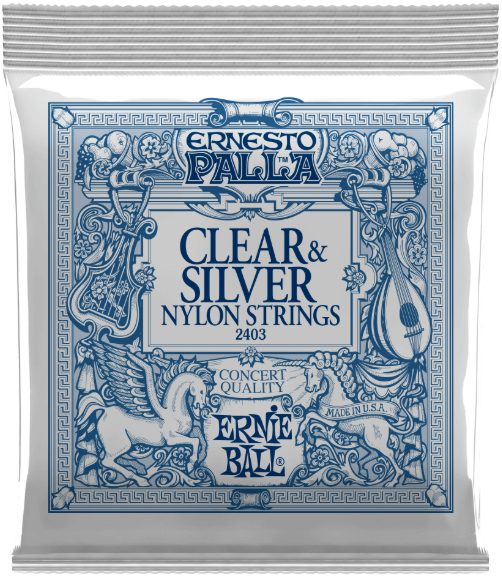
However, if you want a sweeter, more subdued sound, consider using light tension strings; for “harder” musical styles like flamenco, high tension strings are a better choice. (Also note that high tension strings put more strain on the neck. Experienced guitarists sometimes tune down high-tension strings a few semitones after playing so there’s less stress on the neck, particularly with delicate or antique guitars.)
String Gauge
String gauge (the string diameter) is primarily about action—how easy or difficult the guitar is to play. However, gauge also affects tone, and the characteristics are different for electric and acoustic guitars. String sets usually specify the gauge in thousands of an inch for the high E string—for example, a “.010” set means the high E is ten-thousandths of an inch in diameter, and the other strings are scaled to provide a complementary amount of tension. Shredders and those who want the lowest possible action often choose .009 or even .008 sets. Lighter-gauge strings tend to sound brighter, while heavier-gauge strings sound warmer.
Electric guitars use lighter gauge strings than acoustic guitars because the pickups can provide volume, whereas acoustic guitars are dependent on the strings for volume because the strings vibrate the body directly—more energy leads to more volume. With electric guitars, lighter gauge strings are easier to play and bend more easily, but the tradeoff is they produce less volume and sustain, are more likely to lead to “fret buzz” (where the string hits against the fret, causing a buzz), and are more prone to breaking. Also, because they bend so easily, you need to press down exactly vertically on the string; pushing the string slightly to the side can make the pitch Definition:
Definition:
For a given range of audio frequencies, pitch represents where a single sound falls within that range. a bit sharp Definition:
Definition:
A musical note that is higher in pitch than a note's standard frequency. See also: Flat..
Furthermore, strings take a while to settle down to pitch after being plucked. Because heavier-gauge strings are under more tension, they reach pitch faster. This can make the tuning seem more precise. So there are advantages to using heavy strings; however, because they’re nominally harder to play and harder to bend, they’re not a good choice for those starting out on guitar. Over time, as guitar players get stronger hands and become more accomplished with their playing, they’ll often “graduate” to heavier gauge strings—like going from .008 to .010 strings, or .010 to .012.
Also consider that as your playing becomes more refined, you’ll find you can use a lighter touch on heavier gauge strings because they produce more output—a light touch with a heavy gauge string will produce as much output as a heavy touch with a light gauge string. In this respect, heavy gauge strings can be easier to play in some ways, although there’s no way you can get around them being harder to bend because of the tighter tension. Long-term, a lighter touch will benefit your finger joints as well.
Note that some guitarists tune heavy gauge strings down a half-step to make them easier to play, but this also changes tension and tone. This isn’t necessarily a good or bad thing; as with any other changes relating to strings, there are inherent compromises. The bottom line is that if it works for you...do it!
Switching Gauges
Guitar manufacturers will optimize a guitar’s setup for a specific set of strings, and the guitar will ship with those strings. If you want to change the “default” strings, be aware that this requires adjustments. You’ll need to alter the bridge height and possibly, the saddles to tweak Definition:
Definition:
1. To make minor adjustments. 2. A person who is a perfectionist. intonation, and over time, the truss rod may need an adjustment as well. For example, if you change to heavier-gauge strings, they’ll put more tension on the neck, which will increase the amount of relief (the curved space between the strings and fretboard). The way to compensate for this is with a truss rod adjustment. It may even be necessary to alter the nut, although this is something best left to a professional luthier.
Evaluating String Tone
It’s difficult to put on a set of strings, change to different strings, and then remember what the first set sounded like. The differences will be greater with wound strings, so one option is to buy several different string types, then take the wound D from each set, and string up the D, A, and low E strings with a different D string. Tune them to the correct pitch and make sure the pickup Definition:
Definition:
1. Transducer attached to a musical instrument that converts mechanical vibrations into an electrical signal for recording or amplification. 2. The part of a phonograph that translates mechanical motion from grooves into electrical signals for subsequent amplification. is equidistant from the strings. The intonation will be off and the action will not be as expected, but you’ll be able to evaluate tone on a (somewhat) level playing field.
Specialty Strings
You’ll find a variety of strings for special purposes, like DR’s strings that are coated in ultra-bight Neon colors (Fig. 5).
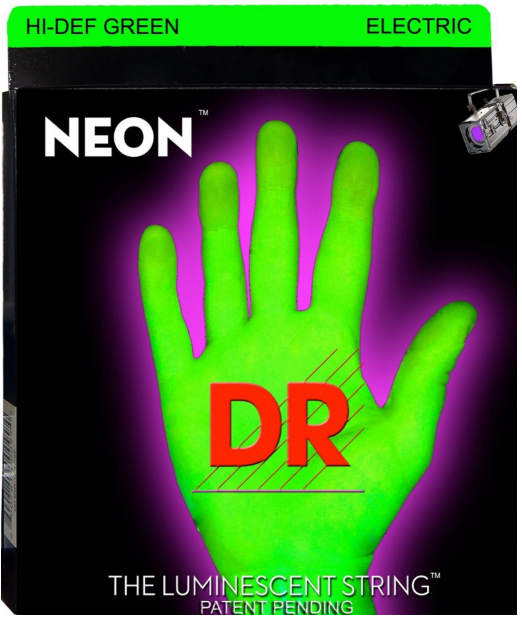
There are also string sets with thick bottom strings for beefier chords, but lighter-gauge high strings for easier soloing and bending, like Ernie Ball’s P02215 skinny top/heavy bottom strings. And some strings combine multiple “specialty” qualities, like D’Addario’s EXP26 acoustic guitar strings. These light-gauge, phosphor-bronze strings are not only coated, they’re a hybrid set with light gauge lower strings and somewhat lighter higher strings for less tension and easy bending. They’re a good choice for electric guitar players who are just getting into acoustic guitar.
For seven-string guitar players, D’Addario’s premium NYXL line offers a 7-string set, as does Dunlop. You can also get a coated 7-string set from DR Strings.
Stringing Along
Even in an article of this length, it’s possible only to scratch the surface...and we haven’t even gotten into ukulele strings! For example, Ernie Ball makes over 200 different types of guitar strings. So how do you choose the string that’s right for you?
First, narrow down your choices to the strings types you don’t want. For example, if you yearn for a warm, vintage sound with minimum fret wear, then you’ll want pure nickel strings. If you have a dark-sounding acoustic guitar, then you’ll probably want the brightness of 80/20 bronze types. If you’re tired of changing strings all the time, then consider coated strings—they’re more expensive, but last four to five times as long as uncoated strings. Seeking a great jazz tone? Then you’ll be checking out flatwounds, which you’ll also do if you’re a bass player who wants a mellow tone (while being smoother to your fingers). Slide guitars are happy with half-round strings...and so on.
After narrowing down to the string type you want, try different brands within those types. Although strings have more similarities than differences, the processes and manufacturing philosophies of different manufacturers can vary quite a bit. You might like one company’s light-gauge, chrome-plated strings more than another company’s version, even though they look the same and are described the same way.
Also, don’t forget that you can buy individual strings. I break the high E string a lot due to bending, so I have quite a few D’Addario PL010 strings sitting around—why break a pack if you need to replace only one string? Also, once you’ve settled on a favorite string type, you can save a lot by buying in bulk.
So the bottom line is simple: strings can make a major difference in tone, ease of playing, replacement cost, and the need to take your guitar to a luthier for a tune-up. Fortunately, it’s not hard to try out different strings, decide on the type you like best...and play on, happily every after.




